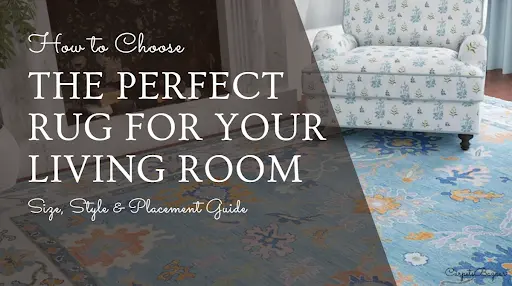How to Protect Rugs from Furniture Damage?
Do you struggle with your rugs being torn or disfigured when you move furniture around them? People tend to mistake rugs as a piece of foundation. However, they are actually pieces of furnishing themselves, and require great care! Rugs bring colour, warmth and personality to any room. Yet, they’re extremely vulnerable to furniture damage. Their lifespans can be cut from whole centuries to mere months! Thus, it’s important to understand the following 6 steps on ‘How to Protect Rugs from Furniture Damage’.
Best Ways to Protect Rugs from Furniture Damage
Your rugs can get damaged for a variety of reasons. However, they are all preventable! Here are 6 all-encompassing steps, to keep furniture from damaging your carpets!
1. Use Furniture Pads to Prevent Carpet Dents

Furniture pads are among the most effective and affordable ways of protecting your carpet! They are small rubber or felt-based protectors. These separate the table or sofa from the carpet. They distribute the pressure and weight of the furniture evenly across a wider area, thus preventing dents and tears.
Best Furniture Pads for Rugs Include:
- Rubber or Silicone Pads: These are perfect for your heaviest furniture. Think of your beds and dressers. These robust pads ensure firm grip and cushioning for your carpet.
- Felt Pads: Meanwhile, felt pads are all about minimising friction. These allow lighter furniture to simply glide across the carpet. Thus, use them for items like side tables and chairs which tend to be moved often.
- Plastic Furniture Cups: If your furniture legs need complete encasing, these are the way to go. They also work particularly well with deep-pile rugs!
Remember to ensure that the pad material is non-staining. Cheaper pads of materials like rubber can cause discoloration, leaving marks on your exotic carpets. Check the packaging carefully, and test one spot first!
2. Invest in a High-Quality Rug Pad
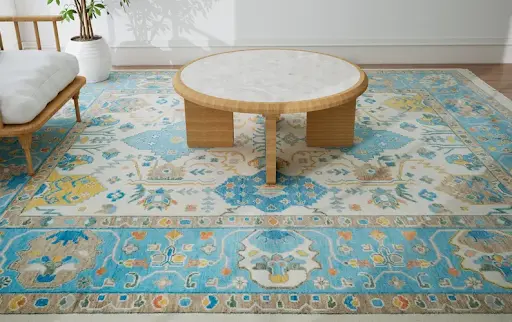
A rug pad sits between your rug and the floor, absorbing pressure and minimizing friction. It also prevents the rug from slipping or bunching up, which is especially important under dining tables or couches that get frequent use.
Why are Rug Pads Essential:
- Cushioning: They significantly reduce compression, providing some relief to your rugs.
- Protection: They protect both the rug and the floor underneath. Moreover, they extend the life of your rug by absorbing daily wear.
- Stability: They even prevent rug-sliding and edge-curling, which are common tripping hazards. Thus, rug pads increase safety for the rug, the floor, and the residents too!
3. Rearrange Furniture Every Few Months
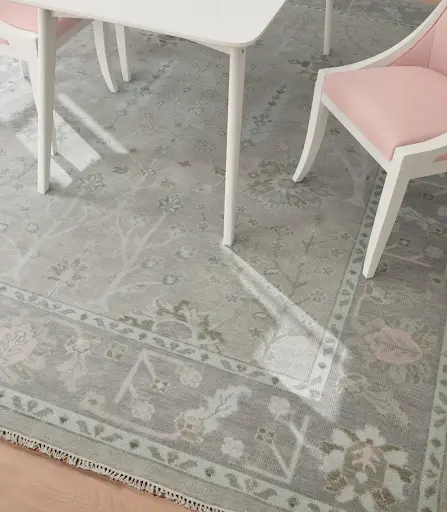
Rearranging furniture does not mean changing your room layout. That simply wouldn’t be feasible. However, one of the simplest ways to let your rugs recover from strain, is to shift your furniture around just a few inches. This lets a different part of the rug carry the strain, while the original parts rests and breathes. If you notice permanent-looking marks, gently brush them with a soft-bristle brush or steam them lightly to lift the pile.
Try This Routine:
- Every three to four months, move heavy pieces slightly.
- Rotate your rug 180 degrees to balance sunlight and foot traffic.
- If possible, swap the position of lighter and heavier furniture seasonally.
Thus, you focus on keeping the affected areas of the rug changing every so often. This small effort keeps your rug evenly worn and prevents certain spots from ageing faster than others. It’s all about balancing the wear!
4. Distribute Furniture Weight Evenly
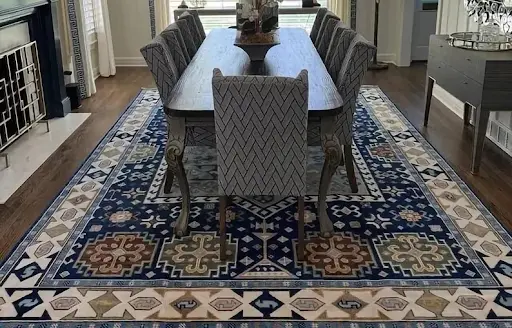
A mindful room design can solve many rug damage issues on its own! Balance is not simply an aesthetic advantage, it also helps longevity! If your living room or bedroom has a few particularly heavy items, make sure the weight distribution is even across the rug.
For example:
- Instead of placing an entire sectional sofa on one end of the rug, center it so the weight is balanced.
- Meanwhile, use larger rug sizes in rooms with bulky furniture. They handle the pressure better.
- Add a rug pad underneath for extra protection. Nothing will harm the rug of a thoughtful owner!
5. Lift Furniture, Don’t Drag It
 A simple tip, but an essential one. Please do not drag furniture across your rugs. That is perhaps the single fastest way of destroying your rug. Moreover, delicate handwoven rugs tend to catch onto those furnishings. The dragging motion completely loosens the knots and fibres of the rug, ruining its structural integrity.
A simple tip, but an essential one. Please do not drag furniture across your rugs. That is perhaps the single fastest way of destroying your rug. Moreover, delicate handwoven rugs tend to catch onto those furnishings. The dragging motion completely loosens the knots and fibres of the rug, ruining its structural integrity.
Therefore, whenever you get down to cleaning or redecorating, lift your furniture fully, then move it. It may sound difficult, but the reward is worth it! However, there may be times when lighting the cupboard or dresser is impossible. Then, use furniture sliders, small discs designed to help specifically in such situations. These discs allow heavy furnishing to glide smoothly over surfaces with minimal friction!
6. Steam, Brush, or Ice Out Existing Dents
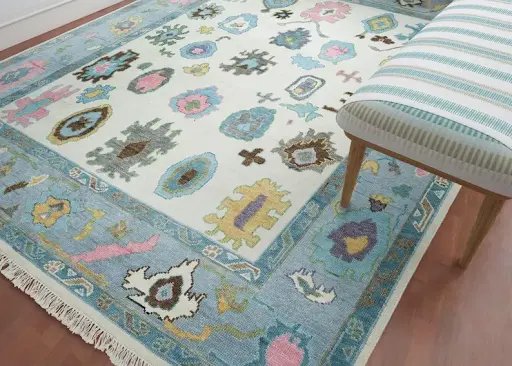
We’ve discussed many ways for you to prevent dents on your rugs. Yet, your carpets may already have some in them! Remember, dents are often fixable. Here’s how to stop furniture marks on carpet once they appear:
Option 1: Steam Method: Use a handheld steamer or the steam setting on an iron. Hold it a few inches away from your rug, then lightly steam the dented area. This relaxes the tension within its fibres. Now, fluff the fibers gently with your fingers or a soft brush and you’re done!
Option 2: Ice Cube Trick: This is not a trick anyone can figure out on their own. Yet, it works like a charm! Place an ice cube on the dent and let it melt slowly. As the water seeps into the fibers, you’ll notice them swelling up. Then, blot excess moisture from the rug, and brush gently once dry.
These natural remedies are simple yet effective for most wool, synthetic, and blended rugs!
Thus, all rugs require a significant amount of care. And mindful planning ensures that you make things easier for you in the future! Learning how to protect rugs from furniture damage ensures that your favorite pieces stay soft, beautiful, and dent-free for years to come. So go ahead, lift that sofa gently, slide in those pads, and give your rug the love it deserves! Explore more expert rug care tips and handcrafted collections at Carpets Bazaar.
FAQs About How to Protect Rugs from Furniture Damage?
Q. How can I prevent furniture dents in my carpet long-term?
Ans: Use rug pads and furniture cups, and move your furniture occasionally. You can also fluff compressed fibers with steam or ice to help them recover.
Q. What’s the best furniture pad for rugs?
Ans: Felt pads work best for light furniture, while rubber or silicone pads are ideal for heavier pieces like sofas and cabinets.
Q. How often should I move my furniture to avoid marks?
Ans: Every three to six months is enough to prevent permanent dents and uneven fading.
Q. Will a rug pad really make a difference?
Ans: Absolutely. A quality rug pad adds cushioning, prevents slipping, and reduces pressure, significantly extending your rug’s lifespan.
Q. Can I repair old dents in antique rugs?
Ans: Yes, but use gentle methods like steaming or ice. For delicate, handwoven rugs, consult a professional restorer.
There are no comments





